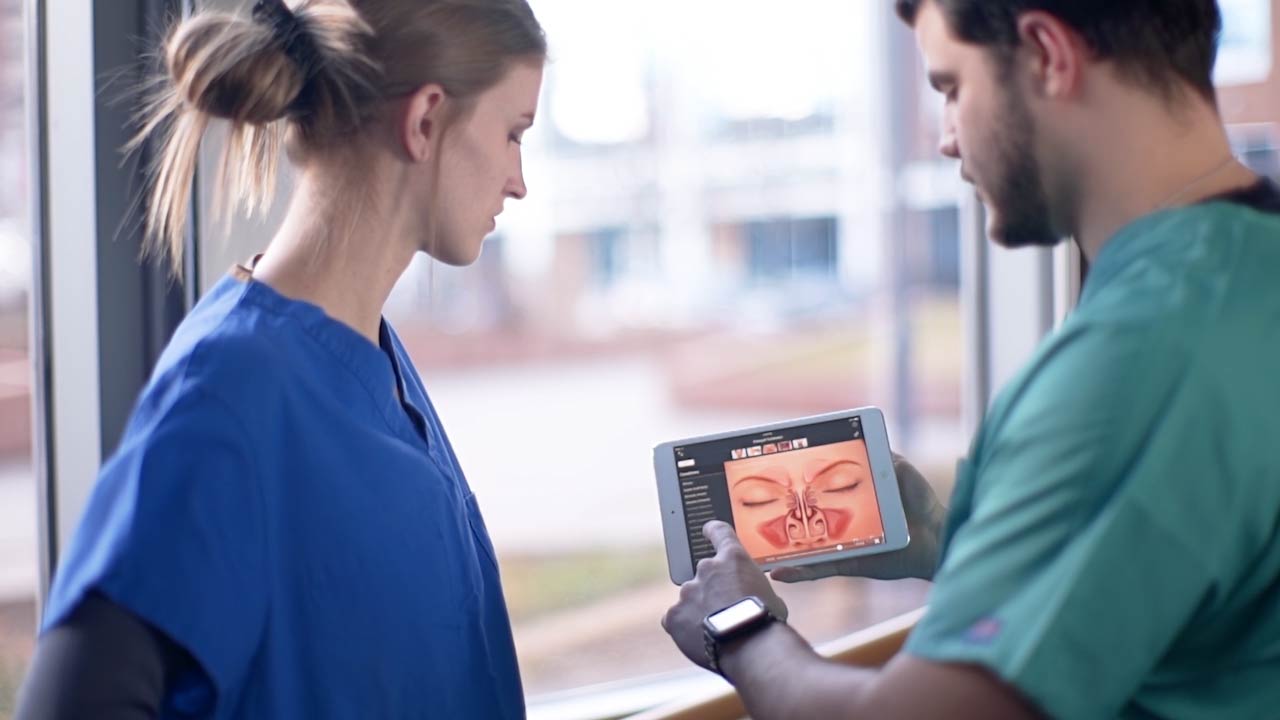The role of education in staff training, patient conversions and practices’ bottom lines
The staffing shortage in eye care is at a “catastrophic level,” ophthalmologist Cynthia Matossian M.D. said. Like other industries affected by the pandemic, optometry and ophthalmology practices have faced losing or laying off employees, making do with less staff and struggling to hire qualified candidates. When used effectively, technology can help address these issues by improving staff training and enhancing patient education.
The impact of the lack of technicians in eye care
Optometric and ophthalmic technicians play a critical role in eye care practices today. Dr. Matossian noted how a technician’s job duty has evolved in the past few years. Technicians need to be highly skilled, well trained and significantly more knowledgeable than in the past.
“Unlike years ago, we have so many more diagnostic tools on which we rely to make the appropriate diagnoses for our patients,” Dr. Matossian said. “The role of a technician has become almost that of a physician extender. They are our right hand. They perform all of these diagnostic tests and help with therapeutic modalities by prepping the patient … We cannot function without them.” This is exacerbated by the fact that the Baby Boomers are now in need of ophthalmic surgery and want to maintain their active lifestyles.
Technicians play a crucial role in eye care, but COVID-19 has caused major staffing shortages for many practices.
Since many employees who fill technician roles are young women of child-bearing age, the COVID-19 pandemic has had a major impact on staffing shortages. Many technicians quit after being faced with childcare challenges or fears about their own health and putting their families at risk.
Consequently, many eye care practices are experiencing a huge demand for these services as they work through a backlog of patients, having reduced the number of non-urgent cases for months –– especially since conditions such as dry eye and chalazia were exacerbated by the pandemic. Some practices are cancelling patients because they don’t have enough staff. Since some of these patients may have opted for self-pay procedures like Lipiflow or LASIK, staff shortages ultimately hurt the practice’s bottom line. “We can’t see enough patients without an adequate number of well trained technicians,” Dr. Matossian said. “Being short-staffed is truly slowing us down.”
Rendia for staff training
One way that practices are addressing the technician shortage is by hiring people without experience and training them. Providers can get new technicians up to speed faster by using Rendia for staff training. At Matossian Eye, the practice Dr. Matossian founded, technicians would watch several Rendia videos a week. “These videos are great tools to explain anatomy, terminology and especially difficult-to-conceptualize topics such as the angle of the eye,” she said. “As a result, our techs were well trained to convey accurate information to our patients.”
Videos like Rendia’s are great training tools to educate staff –– who will then educate patients –– on anatomy, terminology and difficult-to-conceptualize eye procedures.
The more training that technicians receive, the more they will be able to understand the underlying disease to convey expertise, confidence and empathy to patients – ultimately, improving the patient experience. Training also teaches technicians how a particular procedure is performed, and the resultant anatomical change that will improve the patient’s vision. “Once techs have a solid education background, the hands-on equipment operational part ends up happening more naturally and easily because of that foundational knowledge,” Dr. Matossian said.
Avoiding errors and improving conversions
According to Dr. Matossian, having more educated and trained technicians also benefits practices by improving communication between staff and providers. For example, errors are reduced, medications are more accurately transcribed, and the technician can address dosing issues and potential complications if the pharmacy switches out a branded prescription for a generic option.
Conversions to advanced technology and cash-pay procedures are reliant on properly educated technicians and surgical coordinators.
Trained eye care technicians also play a valuable role in patient education. Patients may only grasp a small percentage of what doctors talk about during their short face-to-face time. When the doctor leaves, the patient will often turn to the technician and say, “Can you explain that to me again?” Dr. Matossian said. The technician needs to be able to use the same language as the doctor and convey accurate information in a way that patients can easily understand.
That’s where Rendia comes in. Conversions to advanced technology and cash-pay procedures are reliant on properly educated technicians and surgical coordinators to explain surgical processes and their benefits to patients in simple, easy-to-understand terms.
Education and training by specialty
Ophthalmologic technicians can benefit from watching Rendia videos on various procedures such as cataract surgery, dry eye disease, MIGS and LASIK.
Optometric technicians may find the following videos beneficial for their own knowledge and in their discussions with patients.
While historically technicians may have specialized in one particular field, such as cataract surgery or retinal procedures, “now we are looking for technicians who are cross-trained in more than one specialty,” Dr. Matossian said. She noted that the technician job has historically been siloed due to sub-specialization within the eye care field.
To address these issues, Dr. Matossian and her business partner, Jane Shuman, founder of Eyetechs, Inc., a nationally recognized authority on clinical flow, scheduling and technician education, have formed the American College of Eye Technicians (ACET) to actively recruit, train and place qualified employees in eye care technician jobs.
Using a combination of virtual education, animations and facilitated sessions, ACET will train people interested in a medical career in the foundations of healthcare and ophthalmology. With an internship program at the end of formal education, candidates will arrive at a practice with the basics of the visual system, disease, testing and treatments. On-the-job training will still be required for them to become familiar with physician preferences.
See why over 8,000 providers rely on us for increased conversion rates and happier patients. Schedule a demo today!

